How to Upgrade the RAM in your Synology RS1221+ to 32GB and 64GB RAM Unofficially
Back in Autumn 2020, when the Synology RS1221+ was first released, many users were surprised at the maximum memory an type of locked limit that the manufacturers stated on the specifications – 32GB of ECC DDR4 to be precise (spread over 2 SODIMM slots, with a primary slot occupied with an official Synology 2400Mhz 4GB DDR4 Module). With the AMD Ryzen V1500B 4-Core chip that the Synology RS1221+ arrives with, it did seem odd that the only Error Code Correction memory should be used (ECC is nice but quite industry-specific) and only 4GB of DDR4 memory arrived by default (same as the DS1821+, DS920+ and DS1621+) for this chip was listed firmly in the specification to support up to 8x that amount.
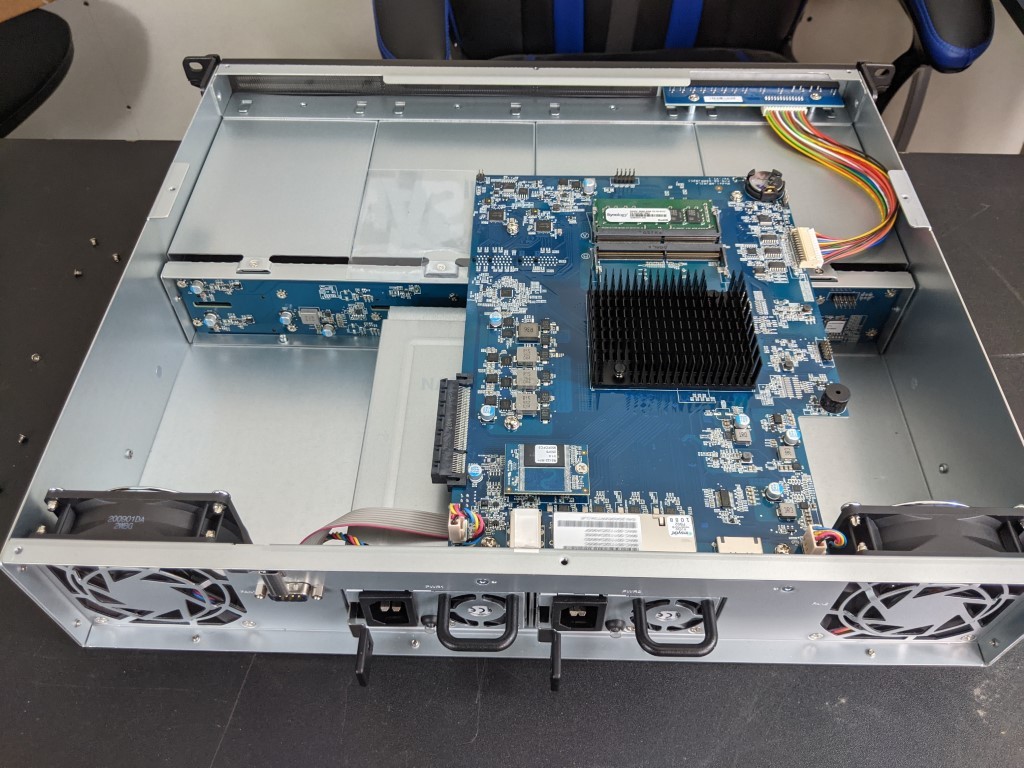
On the face of it 4GB by default, as well as up to a potential 32GB, seems like plenty. That will comfortably support the NAS tasks of a plex media server, all those productive first-party NAS applications, maybe a small VM or two, as well as comfortably run a multi-tier cloud/bare-metal backup strategy. However, as file sizes grow, as NAS surveillance gets popular, as virtual machine and container station applications grow in popularity, it will not be too long before you will see that memory use ALWAYS above 50% in the task manager. Sadly, we have asked the manufacturers and they continue to stand by the fact that you cannot exceed this limit, officially. It was also a hot button topic in both the comments in our RS1221+ unboxing and upgrade videos, as well as the NASCompares RS1221+ Review HERE. However, many users could not resist testing the limits on day 1, to see if 1) Unofficial memory could be used, 2) is non-ECC memory ok to use and 3) Can you use more than 32GB? Because of this, I am pleased to tell you that not only can you use non-official own-brand memory in the Synology RS1221+, but also that you can install a single module of 32GB DDR4 2666MHz Memory in each slot, meaning you can have a Synology RS1221+ with 64GB of Memory! Read below for my guide, it will detail how to install the RAM, how to check that it is installed correctly and how to test that it is working straight away.
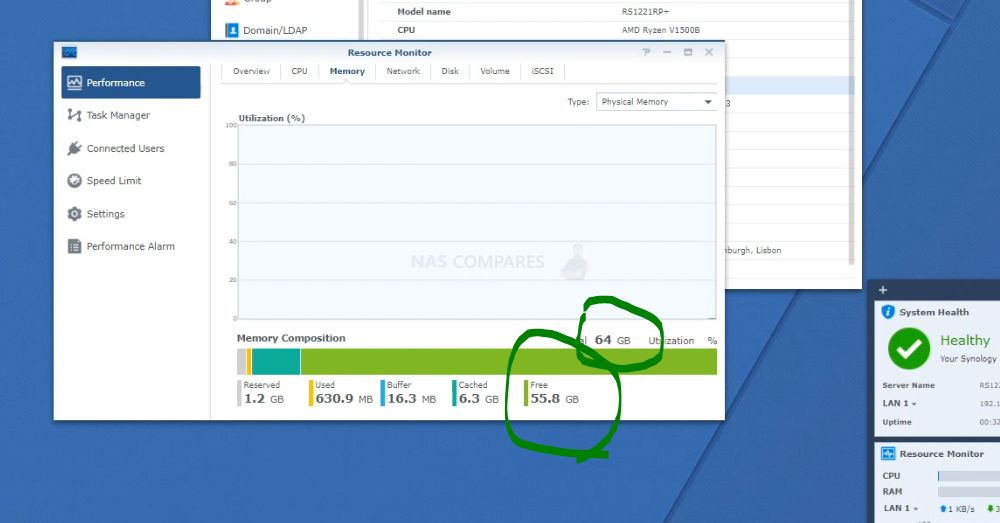
Upgrading your Synology RS1221+ with Unofficial Memory – Pay Attention
Before we continue with the guide, it is worth highlighting that the Synology RS1221+ manufacturer strongly recommends that you do not exceed the stated memory limit on their specifications page. They also highlight that using non-official memory in your Synology RS1221+ may well result in them being unable to provide technical support, as this would be an unsupported setup. We at NASCompares cannot be held accountable for how you use this guide. However below I will show you where to buy the individual memory and Synology RS1221+ NAS device you will need. ONLY attempt this upgrade if you are comfortable with the terms laid out above by the manufacturer. Finally, it is also worth remembering that just because a system can SEE more than the official maximum memory, there is no guaranteeing that you will be able to utilize the full visible memory at once. If you choose to go ahead with unofficial memory, afterwards it is highlight recommended to test the full quantity available with VM testing (assigning bulk memory to each virtual image) and running at the same time to see if it is utilized.
|
Crucial 32GB (2x16GB Needed) 2666Mhz Memory CT16G4SFD8266 |
Kingston 64GB (2x32GB Needed) 2666Mhz Memory KCP426SD8/32 |
Where to Buy the Synology RS1221+ with Official Memory?
It’s important to know that although there are many different kinds of Synology NAS, this guide is for the RS1221+ NAS. Although many of the Diskstation range are similar, there are many differences in Memory module frequency, size and capacity support between the hardware architecture of devices, so make sure you are only following this guide if you want to upgrade the memory unofficially on a Synology RS1221+ NAS drive.
32GB & 64GB Synology RS1221+ Memory Upgrade – Step 1, Physical Installation
What you will need:
- A Synology RS1221+ NAS – Obviously
- 1/2x Memory Upgrade Modules (Ranging from 4GB to 16GB and 32GB Individual Modules – Link below for Tested RAM modules from Crucial, Kingston, Samsung, Timtec and Synology Official Memory too:

RS1221+ (Arrives with ECC Memory) |
DDR4-2400 ECC
Unbuffered SO-DIMM 260pin 1.2V |
D4ES01-4G (ECC) OFFICIAL
D4ES01-8G (ECC) OFFICIAL D4ECSO-2666-16G (ECC) OFFICIAL |
Crucial NON-ECC 4GB – Buy Here
Kingston NON-ECC 4GB- Buy Here Crucial NON-ECC 8GB – Buy Here Kingston NON-ECC 8GB- Buy Here Crucial NON-ECC 16GB – Buy Here Kingston NON-ECC 16GB- Buy Here Kingston NON-ECC 32GB – Buy Here Kingston ECC 8GB – Buy Here Arch ECC 16GB – Buy Here vColour ECC 32GB- Buy Here |
VERY IMPORTANT – The Links used in the article below towards the correct unofficial memory are occasionally changed (beyond my control) as it will direct you to the site in your own region/country. MAKE SURE to check that the memory module (especially 16 and 32GB SODIMM modules) are DUAL RANK or ‘DR‘, as Synology NAS typically have trouble with SR/SINGLE RANK modules.
- Small Phillips Head Screwdriver – (kinda optional but recommended for chassis)
- (OPTIONAL) Anti-static gloves and Envelope – useful to eliminate static charges and also to store the removed older official memory sticks):
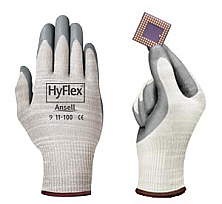 |
 |
First, we need to ensure the Synology RS1221+ is completely powered down/off and the mains power has been disconnected. It is recommended that you remove the Hard Drive or SSD that you have installed before accessing the RAM as it may block the slots. Additionally, you should remove the hard drive media as the unit will be moved around a lot during the memory installation and this could damage the drives. Be sure to keep a note of the drives that you remove and the order they were installed (HDD Bay 1, HDD Bay 2, etc) as installing the drives in the wrong slots could damage any existing RAID you have set up internally.
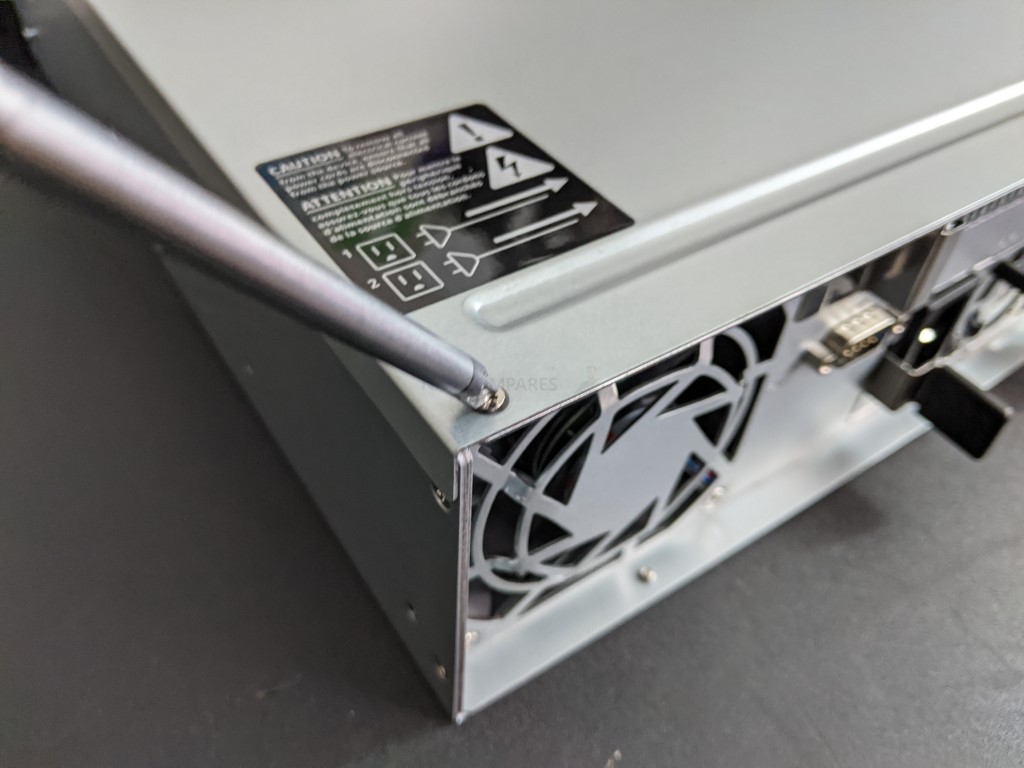
Nex we need to access the memory bays of the Synology RS1221+ NAS. These are located inside the main chassis of device and require you to unscrew the Phillips head screws at the rear of the rackmount chassis, then removing the metal lid.
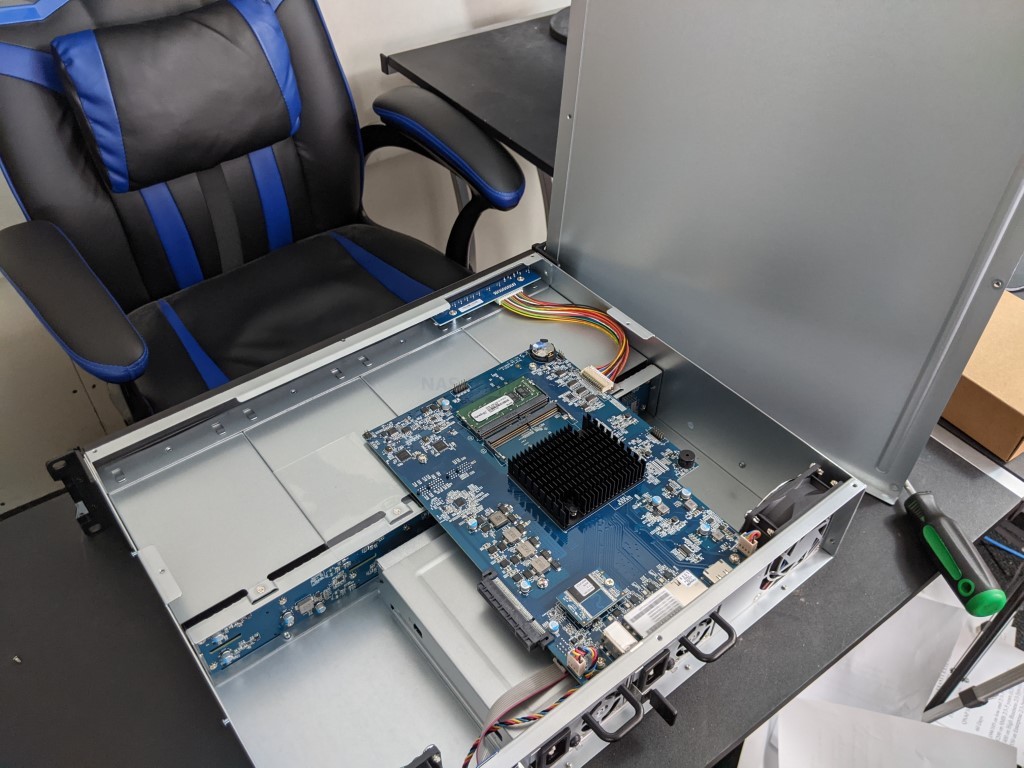
Next, we need to access and remove the existing memory, as the news 32GB or 64GB of memory for our Synology RS1221+ will occupy both slots.
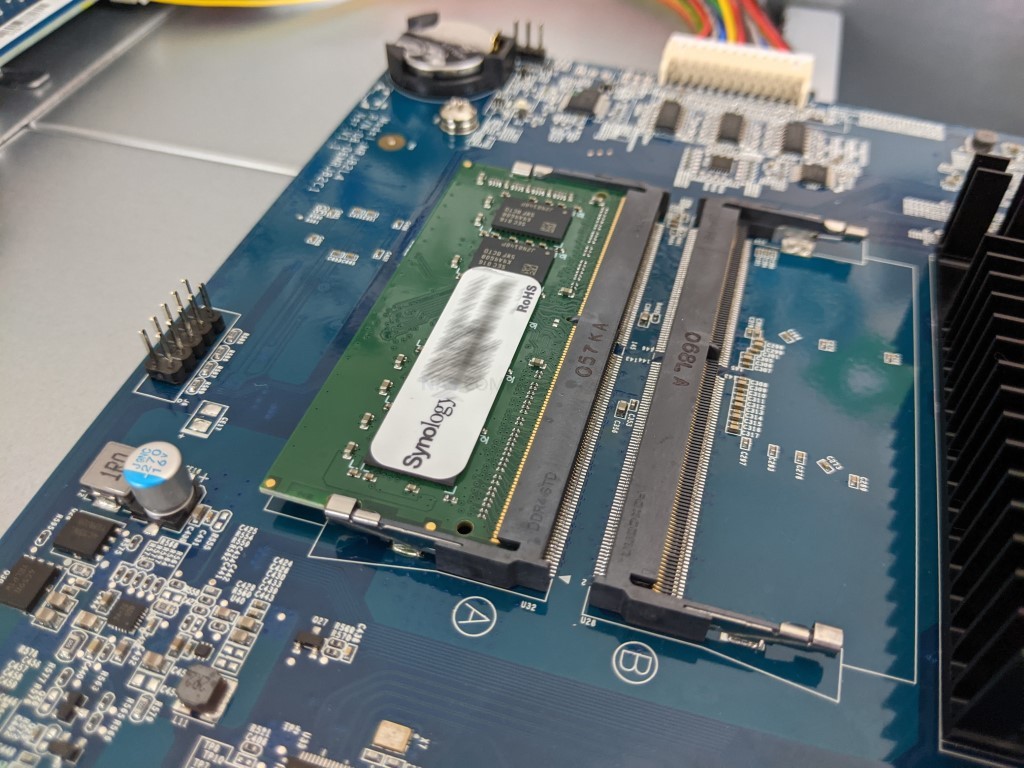
Be sure you eject the official memory sticks using the clips on either side of the slot, as well as only holding the memory sticks by the narrow side edges, never touching the chips or board of the money or NAS.
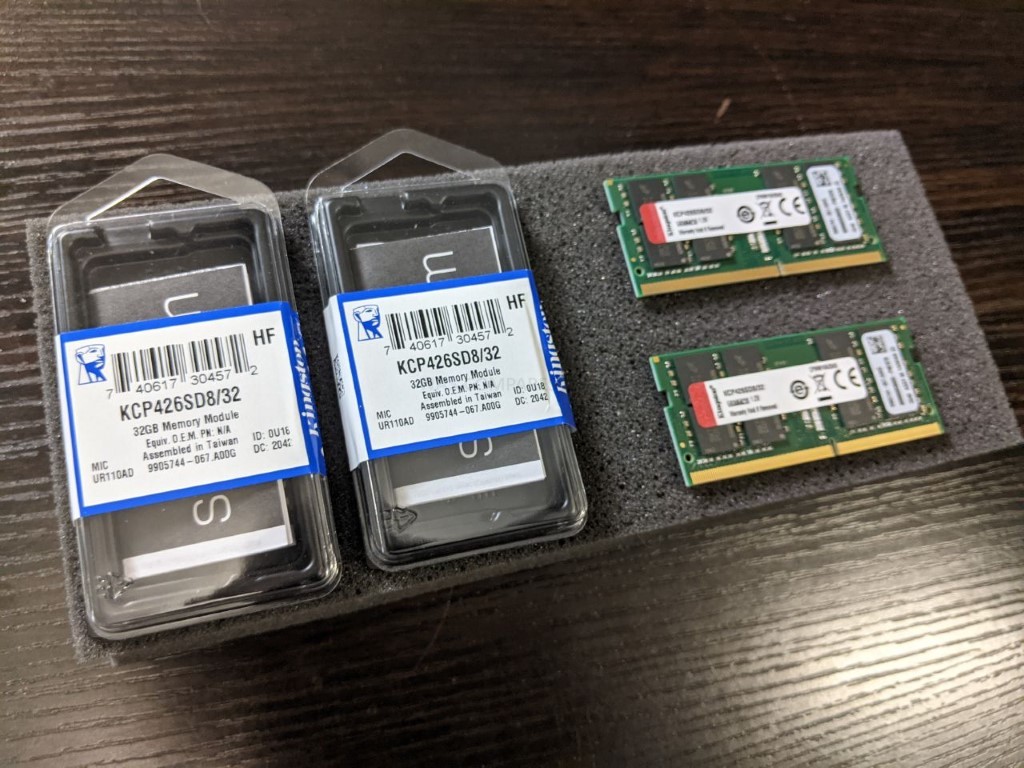
Once you have removed them, they can either be stored away for a later project, installed in a compatible laptop or sold on eBay etc to make a little cash back!
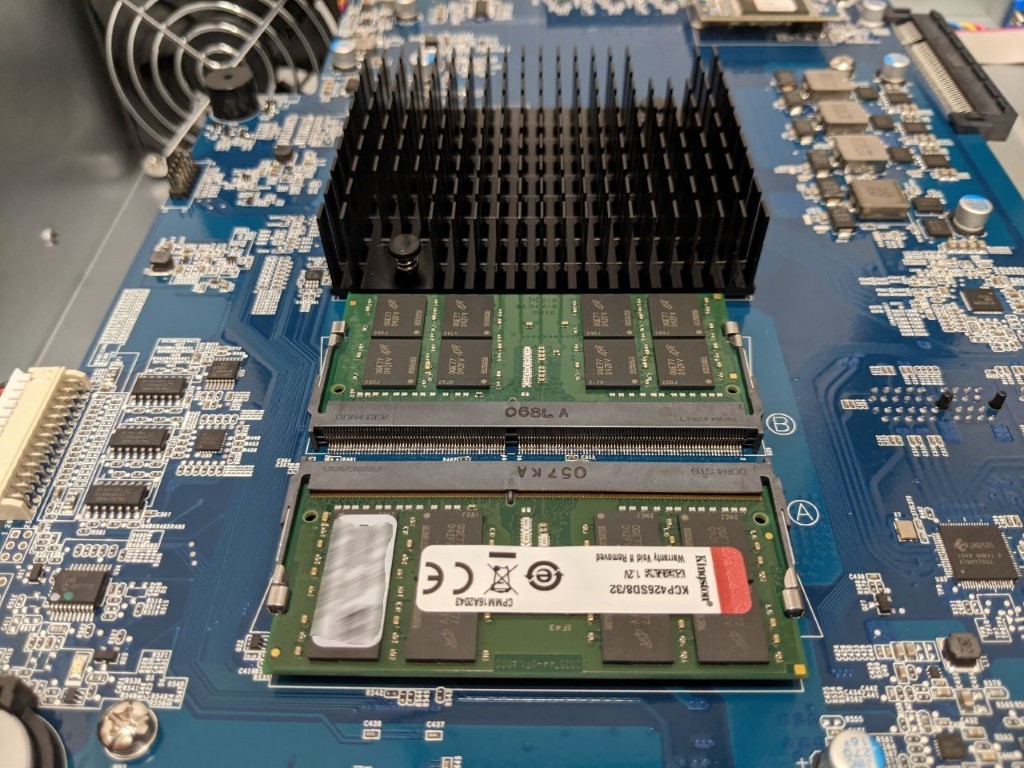
Once they are clear, install one or both of your chosen unofficial DDR4 SODIMM memory modules in the available slots, making sure that you click them both in with the clips on either side.
64GB and 32GB Synology RS1221+ Memory Upgrade – Step 2, Checking the Unofficial Memory is Recognized
What you will need:
- A web browser (Chrome, Safari, Firefox, etc) on a Windows, Mac or Android Machine) accessing the Synology RS1221+ user-interface as you normally would.
Next, you need to power up your Synology RS1221+ NAS and access it as you normally would. If you are buying this NAS first time and have yet to set it up, there are numerous first time set up guides and tips on the YouTube channel here – that will get you from the hardware installation to set up the Synology RS1221+ NAS for use. Once the NAS user interface (UI) is ready to go, head over to the hardware specification page shown here:
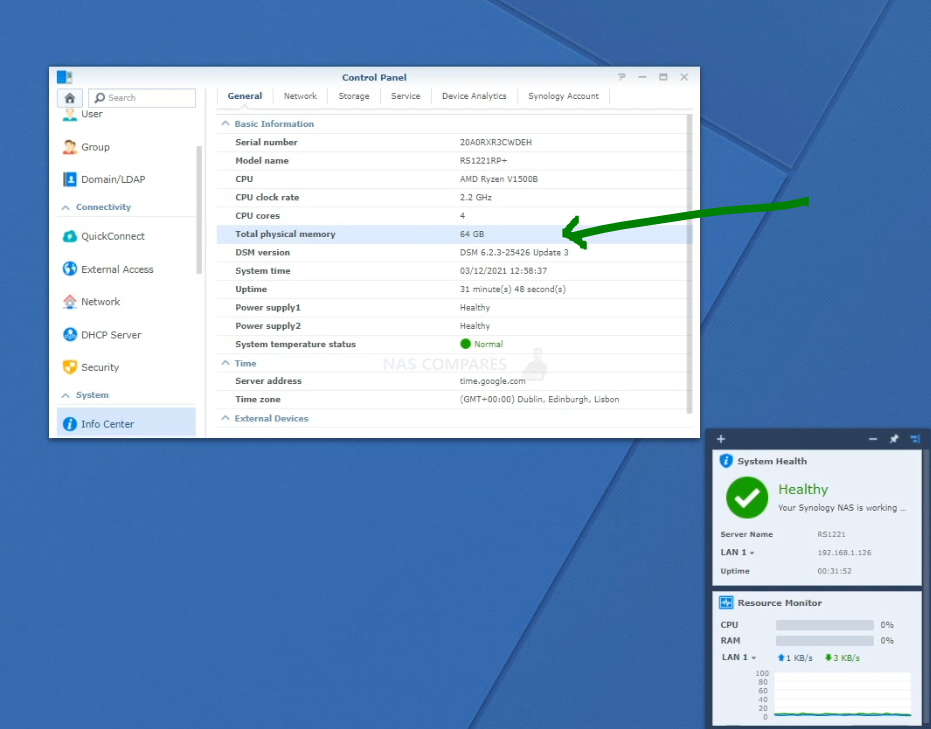
As you can see from this CPU and Memory display, the Synology RS1221+ has recognized and made available the 64GB of Kingston memory. It will be immediately available for use and you will see that the % amount of use of the RAM in the resource monitor will be much, much lower, as there is significantly more memory available for the system!
Kingston & Crucial Synology RS1221+ Memory Upgrade – Step 3, Checking the Memory is Usable
There are several ways to check the memory is working on your Synology RS1221+ correctly. One easy method that can be done very quickly is using the Synology Memory Test tool.
To run a memory test:
-
- Download and install the Synology Assistant, where you can find the memory test function. The application is available at Download Center.
- Open Synology Assistant, click and enable the memory test service.

-
- Select the device where you wish to run the test and click Memory Test.

- Select the device where you wish to run the test and click Memory Test.
During the memory test, your Synology NAS will be rebooted. It will recover after another reboot if its memory is normal and passes the test. However, if the memory test fails to finish or shows that there is an error, the memory may be faulty. In this case, you are strongly recommended to return your Synology NAS for repair. Just in case you have installed a non-Synology memory module, please remove it and rerun the memory test. Though once again you should remember that Synology do not recommend using memory modules that are not from Synology themselves, so this test may not be indicative of the health of unofficial memory in your Synology NAS. Alternatively, you can perform as many actions and processes as possible (scans, copy/pastes, thumbnail generation, transcode a 4K file, RAID changes, synchronisation, etc) at once to see how the task manager and resource monitor behaves in the Synology RS1221+. It should spike each time and at a greater height as you do more and more and once it exceeds the memory you had previously installed, this is a good confirmation that the installation is working fine.
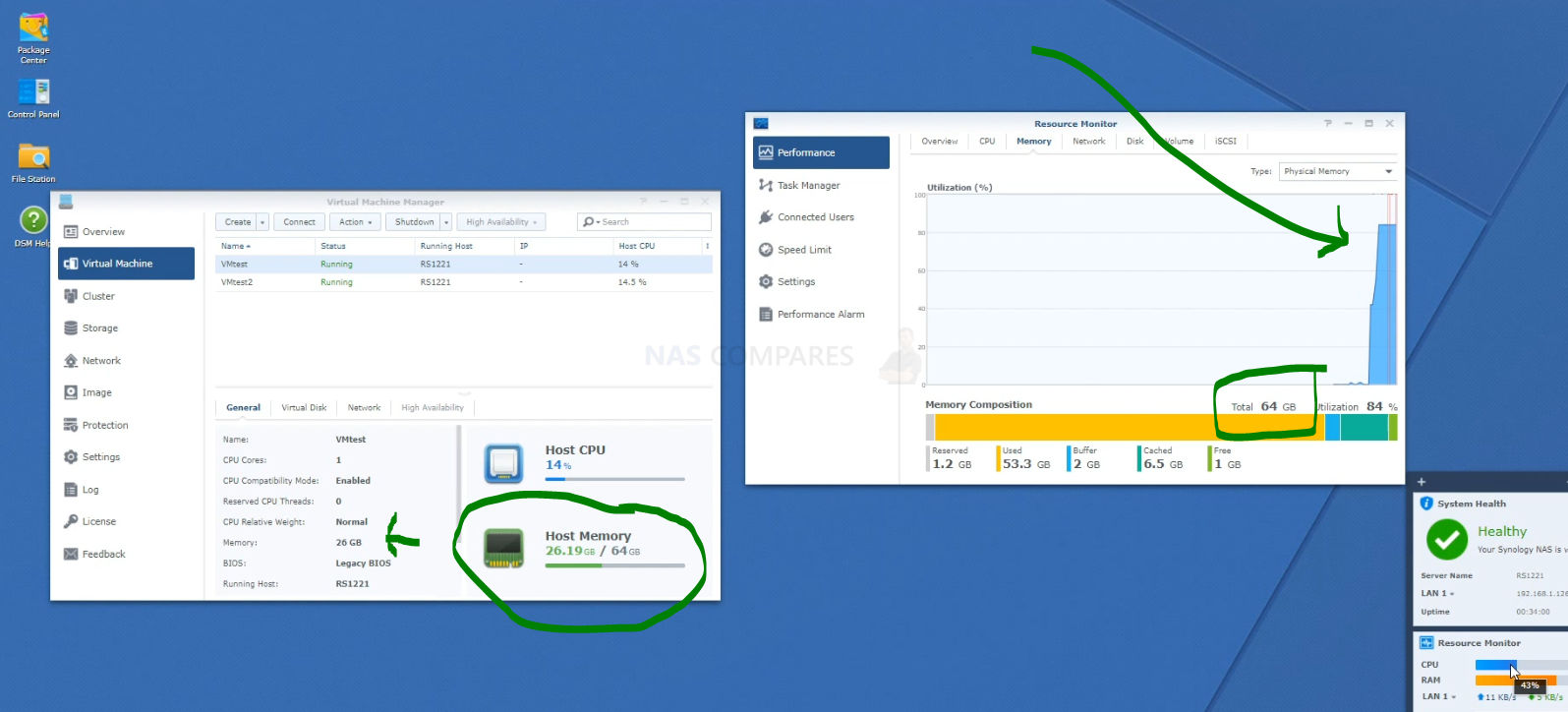
Alternatively, you can temporarily allocate chunks of memory and then that is a much more reliable test. Install the virtual machine application for the Synology RS1221+ (P.S. for Synology users it is the Virtual Machine Manager and for QNAP it is the Virtualisation station). Then you can create individual VMs (it is alot easier than it sounds and the Synology RS1221+ VM software is very user-friendly) then allocate a large number of GBs (Gigabytes) of memory to each one. When you have created 3 or 4 individual virtual machine containers on the Synology RS1221+ software, then you can run them all at once and that will immediately use almost all the memory at once! If there are any issues with the memory, it will show here almost immediately. If no problems, then you know the Synology RS1221+ unofficial Crucial/Kingston memory installation as successful. You can then delete the VMs in the virtual machine software and then free up all that memory again.
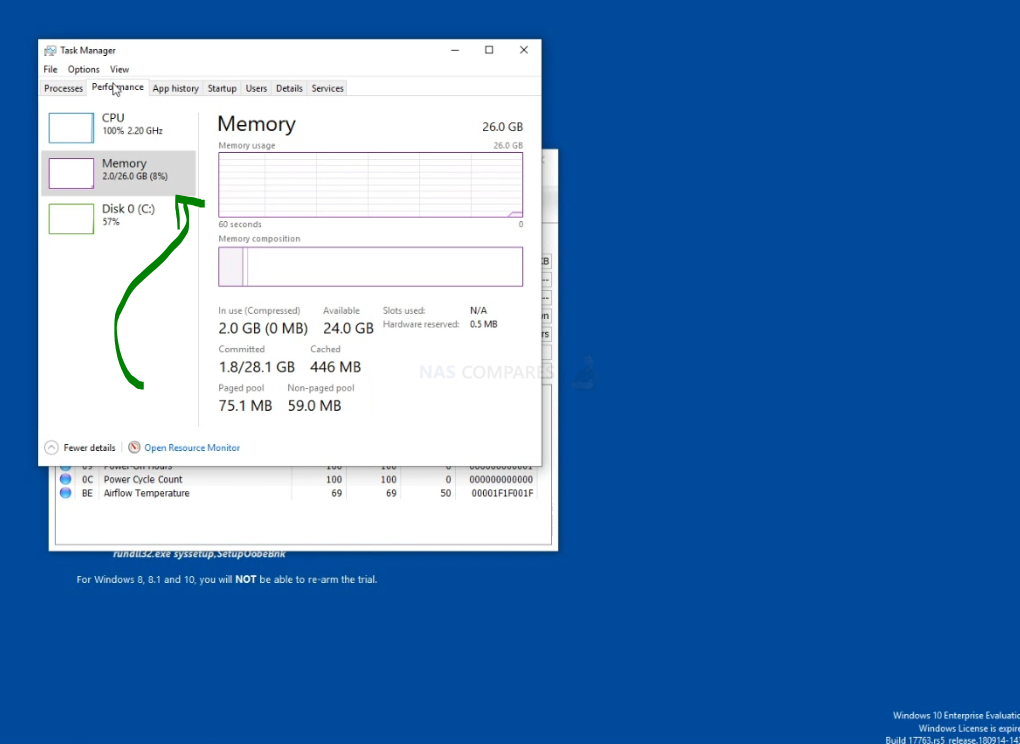

RS1221+ (Arrives with ECC Memory) |
DDR4-2400 ECC
Unbuffered SO-DIMM 260pin 1.2V |
D4ES01-4G (ECC) OFFICIAL
D4ES01-8G (ECC) OFFICIAL D4ECSO-2666-16G (ECC) OFFICIAL |
Crucial NON-ECC 4GB – Buy Here
Kingston NON-ECC 4GB- Buy Here Crucial NON-ECC 8GB – Buy Here Kingston NON-ECC 8GB- Buy Here Crucial NON-ECC 16GB –Buy Here Kingston NON-ECC 16GB- Buy Here Kingston NON-ECC 32GB – Buy Here Kingston ECC 8GB –Buy Here Arch ECC 16GB –Buy Here vColour ECC 32GB- Buy Here |
🔒 Join Inner Circle
Get an alert every time something gets added to this specific article!
This description contains links to Amazon. These links will take you to some of the products mentioned in today's content. As an Amazon Associate, I earn from qualifying purchases. Visit the NASCompares Deal Finder to find the best place to buy this device in your region, based on Service, Support and Reputation - Just Search for your NAS Drive in the Box Below
Need Advice on Data Storage from an Expert?
Finally, for free advice about your setup, just leave a message in the comments below here at NASCompares.com and we will get back to you. Need Help?
Where possible (and where appropriate) please provide as much information about your requirements, as then I can arrange the best answer and solution to your needs. Do not worry about your e-mail address being required, it will NOT be used in a mailing list and will NOT be used in any way other than to respond to your enquiry.
Need Help?
Where possible (and where appropriate) please provide as much information about your requirements, as then I can arrange the best answer and solution to your needs. Do not worry about your e-mail address being required, it will NOT be used in a mailing list and will NOT be used in any way other than to respond to your enquiry.

|
 |
UGREEN NAS Now has iSCSI, 2FA and Jellyfin (and more) - FINALLY!
Seagate 30TB Ironwolf and EXOS Hard Drive Review
Why Do Cheap NAS Boxes EXIST????
Minisforum N5 Pro NAS - Should You Buy?
UGREEN DH4300 & DH2300 NAS Revealed - Good Value?
Aoostar WTR Max NAS - Should You Buy?
Access content via Patreon or KO-FI







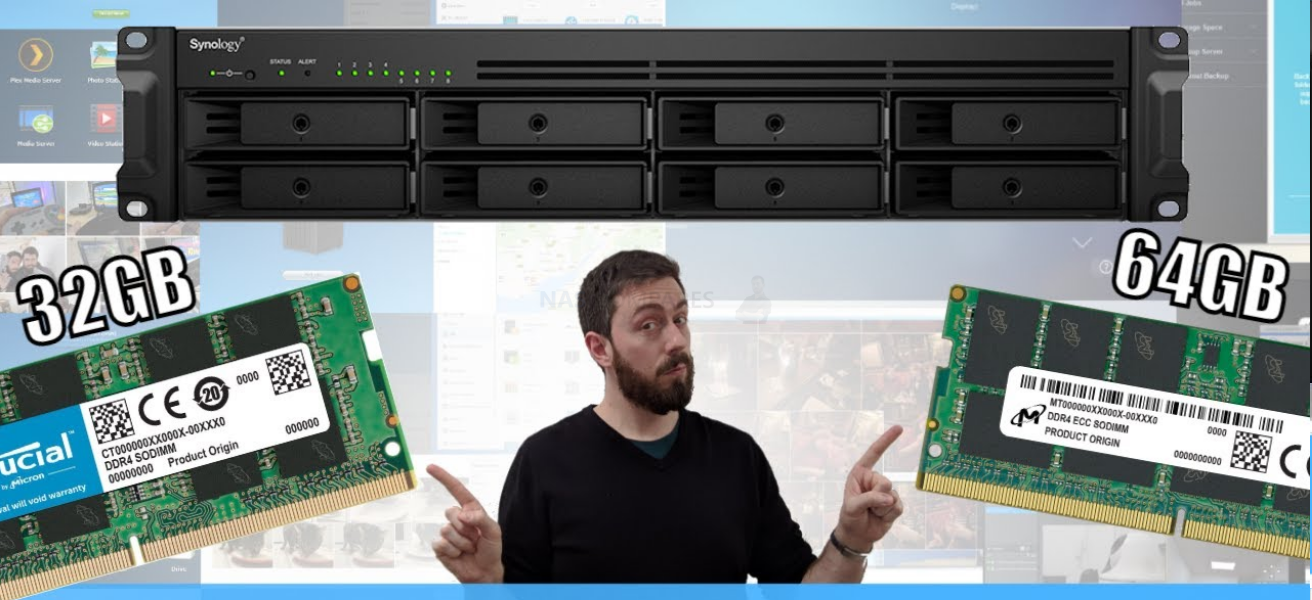
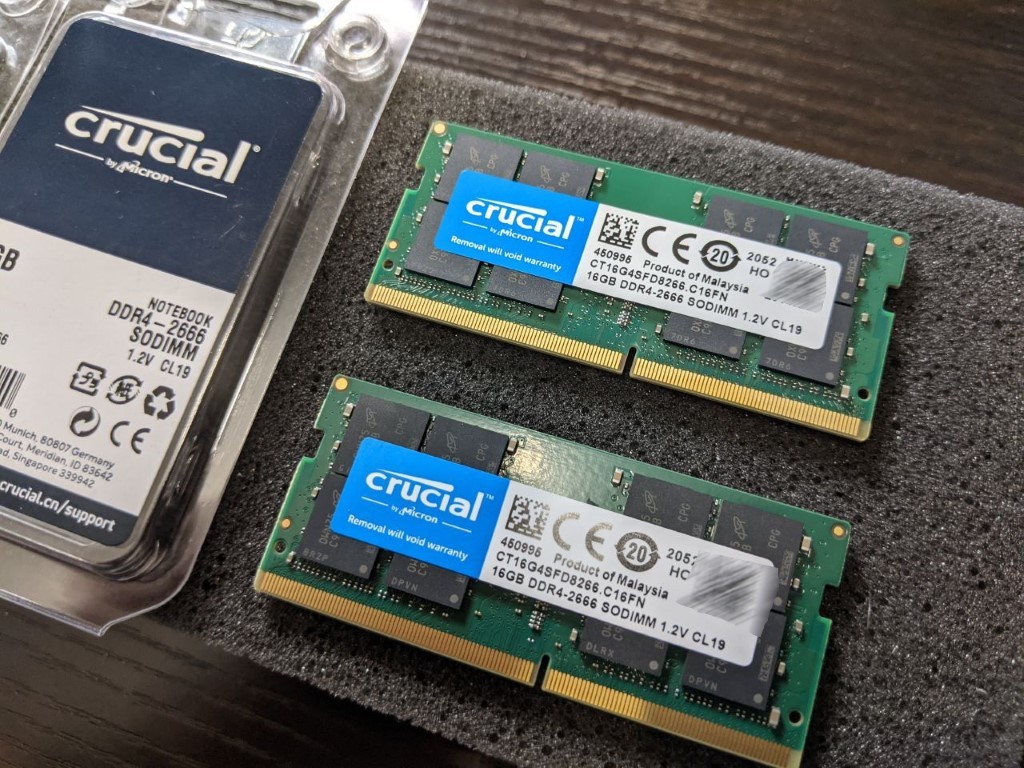
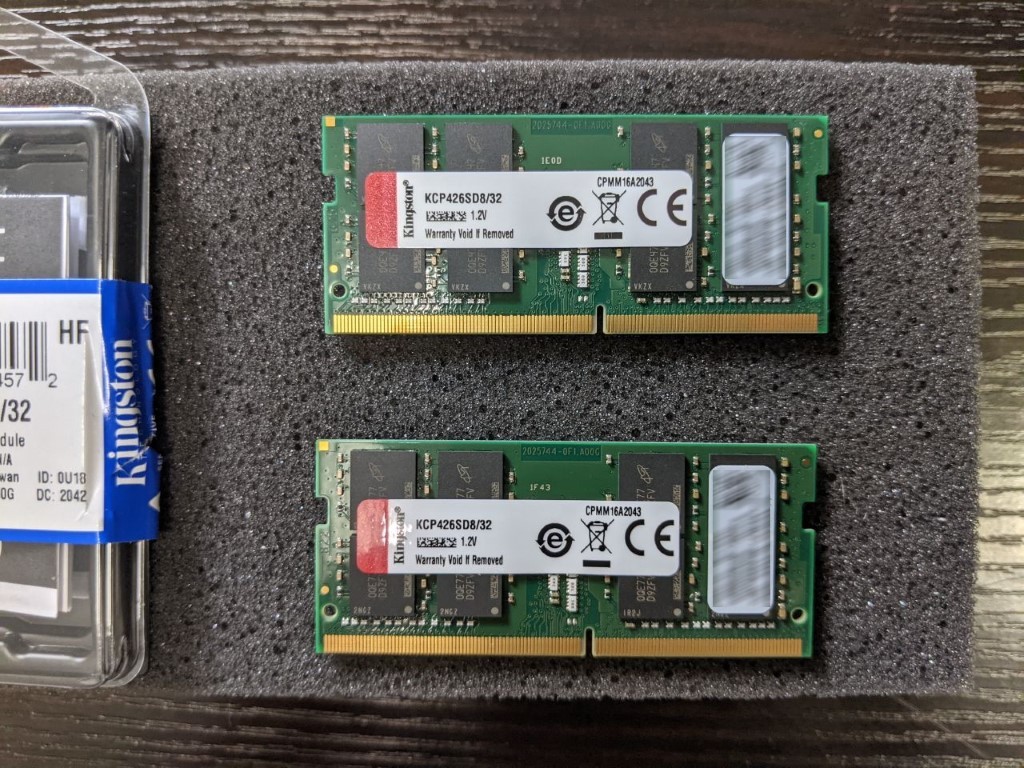

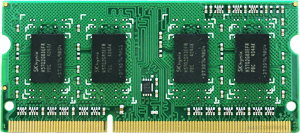

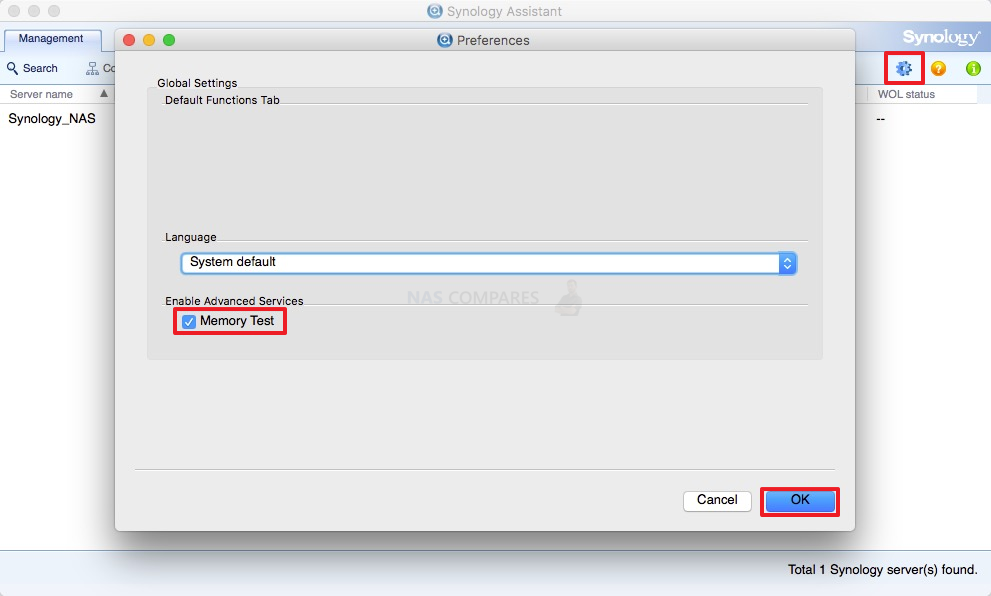
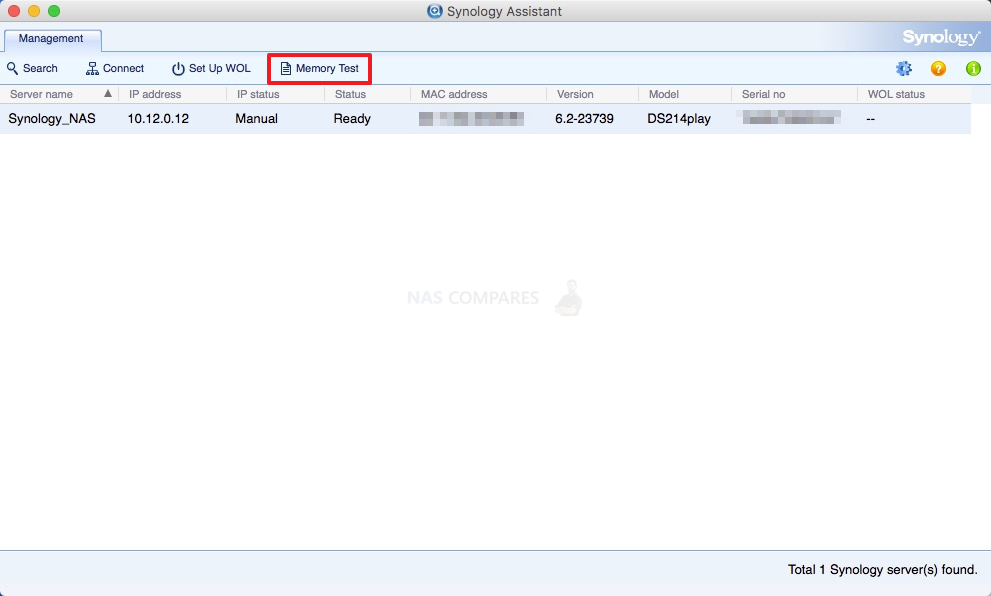



I just did the 2x 16GB Kingston upgrade ( KSM26SED8/16HD) and it worked flawlessly. No incompatibility message.
The first thing that is noticeable is that the DSM UI is significantly faster than before. Between the moments I enter user name, password and actually accessing the UI, it now is barely a second. Before it was 2 to 5 seconds each. The UI itself is also more responsive now. File connections too – less waiting time during connection and browsing.
I did a second upgrade later on, adding a SSD read/write cache (2x 1TB Seagate Firecuda 530R). That improved TimeMachine backups extremely well. Where it previously took 1 or 2 hours, depending on how many Mac’s in our house were doing their backup at the same time, it now is reduced to 10-30 minutes. And… the SMB connection is actually closed afterwards – in DSM these connections stayed up even when the backup session was finished. The connection log used to show several connections being made during backup sessions, now it only shows one per TimeMachine backup session.
According to Perplexity AI (I fed it some logs) the SMB issues are related to the limited RAM because the system has not enough memory available for SMB session metadata and all related processing, which causes the swap file being used which in turn causes significant delay. With 32GB RAM this was greatly eliminated for the 5 Mac clients our NAS is serving. The additional SSD cache has reduced the time used for each individual backup and it looks like there’s no extra delay when multiple clients do their backup.
Maybe later I’ll do some extra testing myself: (1) TimeMachine without cache (only 32GB RAM), (2) with readonly cache enabled and (3) with read/write cache enabled.
REPLY ON YOUTUBE
KF426S16IBK2/64 (set of 2, total 64GB, kingston furry) Confirmed working.
REPLY ON YOUTUBE
Rs1221rp+ same?
REPLY ON YOUTUBE
why not try kingston ECC ram? They have it…
REPLY ON YOUTUBE
Kingston 16GB 2666 DDR4 KVR26S19D8/16 (NB) Is this memory compatible?
REPLY ON YOUTUBE
Hello,
I would just like to share my experience here, I have just updated my Synology RS1221+ with more memory.
First of all, a few considerations. Even if it is a litlle risky to change the memory, I have not taken all the risks:
– since it came with ECC memory, I have used also ECC memory
– since it was specified that the maximum allowed memory is 2 x 1 6GB, I didn’t go beyond this, it is more than enough for my home configuration.
– I have decided to use know brands, no any no-name memory module. So my choice was Kingston for the simple fact that they have tool to choose the memory module (and not only) for your specific product (https://www.kingston.com/en/memory), in this case you have the modules here: https://www.kingston.com/en/memory/search/model/102350/synology-rackstation-rs1221-rs1221rp
I honestly don’t know the difference between “Hynix D” and “Micron R”, it seems that the first one is a little better with the overclocking, but I can’t tell. Since the price is similar, I have decide to go with the first one (so KSM26SED8/16HD).
I have replaced first the original 4 GB module with one new module (so I could return the second one if it didn’t work) and started the system. It started quickly and all I got was the warning about unofficial memory in the logs. The recognized memory was 16 GB.
Then I have added the second module. Again, no problems, just the warning, and recognized memory 32 GB. The warning message is not really an issue, it is displayed only once at boot time, and in the Notification panel as a System event. I was afraid it is a pop-up each time you connect to the DSM as admin (by the way, I am running the most up-to-date DSM, 7.1.1-42962)
Once these steps completed, I have run the Memory test in the Synology Assistant. It completed in ~4 hours and a half. The progression is not linear (I think after 2 hours and a half it was displaying 75%) and the progress is not updated automatically if you don’t change the tab.
I was a little bit surprised it didn’t display any “Success” message, but as long as it didn’t display any error, it is fine 🙂
It has been more than a week since I have done the upgrade, and although I haven’t used it too intensively, I couldn’t see any problem. I will try next to make a VM to see how it is working, but I am confident.
I hope this will help all those who want to upgrade the memory in their Synology NAS. Synology memory modules are outrageously pricey, for me Kingston was 4 times cheaper!!
Good luck to all!
Did you had a chance to do follow up test to see if memory behaves properly? I cannot find it on your channel.
REPLY ON YOUTUBE